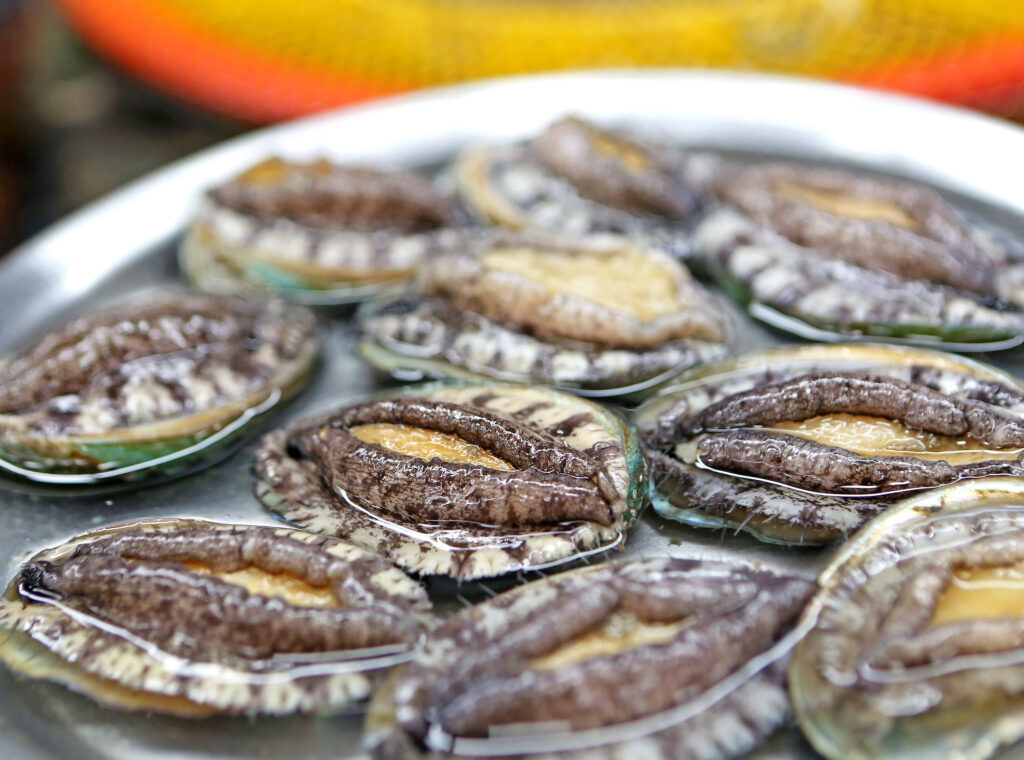Abalone is a wonderfully mysterious ocean delicacy that commands a very high price, but how long does it take to grow?
Abalone has a dramatically long lifespan for what is a relatively plain organism, living for some forty years in the wild. However, it’s around the five-year mark when they’re often taken from the ocean to be consumed, or when they’re around five inches or more in length.

Read on to learn more about abalone and understand its place in the culinary world.
Would You Eat A Snail?
When you hear the word ‘abalone’, you might not immediately know what it means. If you were from New Zealand, you might call it Pāua, or Bàoyú if you lived in China.
Your mind doesn’t make the connection between the word ‘abalone’ and a dramatically expensive and sought-after delicacy. However, that’s exactly what abalone is.
Put simply, it’s a sea snail – a mollusk that exists on rocky surfaces in cold, shallow waters around the world. It’s a hard-backed, strange-looking organism, often shapeless and hard to really identify if you’re not sure what you’re looking at.
That is if you can even find them. They’re dramatically well-camouflaged, and they cling to rocky surfaces for dear life, consuming whatever plant life they slowly come across.
These weird and wonderful ocean-dwelling creatures have a long and storied history. There’s evidence of abalone having some importance in some cultures as far back as eight thousand years ago.
Although they’re often quite hard to find and catch, they crop up in a surprisingly high number of places. They can be found growing in almost every continent on the planet, but commonly appear in the United States, New Zealand, South Africa, and Japan.
There are many terms for abalone, which describe quite a wide family of sea snails, but they’re mostly the same from species to species. It’s often the color that marks the biggest differentiator, with some abalone being pink, some green, and some black.
What’s true about them all though, is that they’re apparently delicious, a culinary delight, and very sought-after. They command a high price on the open market and aren’t all that common in anything but specialist restaurants.
What A Mysterious Mollusk
As we’ve said, abalone is very strange in appearance. You can pick one up and hold it in your hand, and you’re not really sure what you’re looking at; it certainly doesn’t look like something you’d eat.
There is something that resembles a face, with two spindly little eyes mounted on tentacles, quite like a land snail. There’s also a tiny mouth but apart from that, it’s very hard to discern any real features.
Abalone has a considerably longer lifespan, with the oldest examples living for around forty years. However, they tend to be harvested or caught when they’re around five years of age, or about four inches in length.
There are actually regulations in place in some countries that prevent the harvesting of abalone that doesn’t meet minimum length requirements. This is often due to the mollusk reaching sexual maturity between the ages of four and six years.
There has been a decline in recent years in the numbers of abalone in the wild, as a result of overfishing. That’s why these regulations exist, as environmentalists fight to give abalone a chance to breed before they’re plucked from the ocean.
It’s an insane fact, but when abalone does breed, they do it by ‘broadcast spawning’. This is when the abalone actively releases eggs and sperm into the ocean around them.
In this practice, a female abalone will release anything from ten thousand to eleven million eggs at one time. That’s likely a considerable factor in answering the question of their widespread occurrence.
Plucked And Put On The Plate
Reportedly, China is the world’s biggest consumer – and producer – of abalone. They apparently consume over one-hundred thousand tons of abalone every year, and that’s a figure that’s on the rise.
However, you can get abalone in many restaurants across the United States, more commonly along the east and west coasts. In fact, the best bet for seeking out some delicious abalone is in the many fish restaurants littered around California.
There has always been an abundance of abalone off the coast of California, so that’s the best place to start. Although, you should definitely bear in mind that you might run up a considerable bill once you dive into the abalone dishes.
